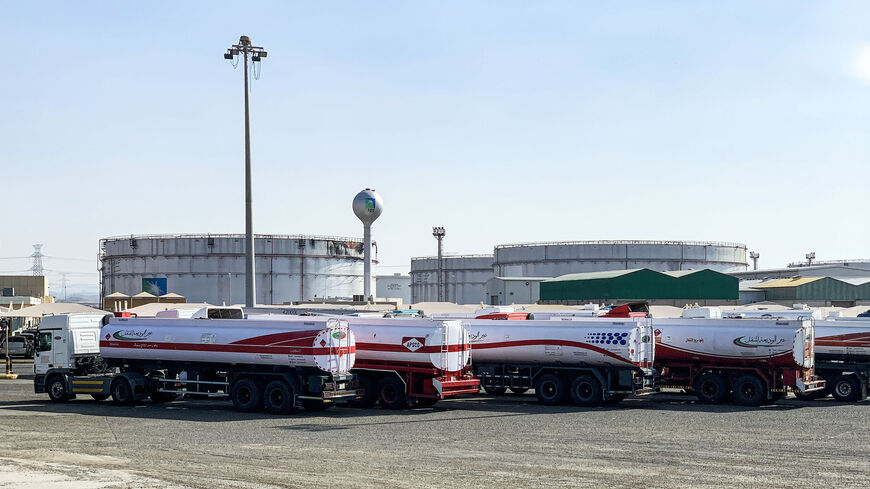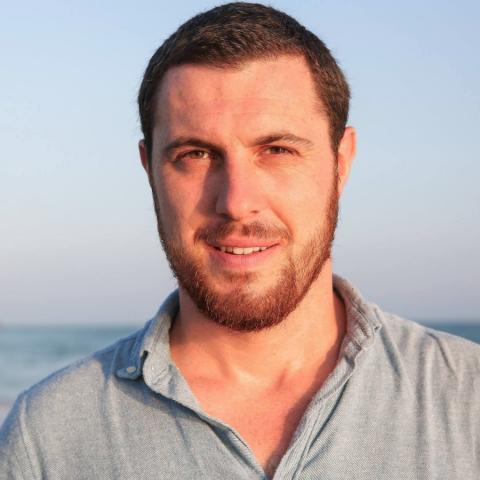Gulf countries’ strategy has become more sophisticated; the era of leaving money on the table has ended. “There is one end that is oil, gas and green energy, and there is the other end, which is the end consumer goods. I see Gulf countries basically pushing along the whole chain. I think that is very clever to do because you basically fill the whole scope,” Udo Huenger, vice president for the Middle East at BASF, one of the world’s largest chemical companies, told Al-Monitor.
The chemical industry has emerged as a major industrial sector in the Gulf Cooperation Council (GCC) region as the global economy has grown increasingly dependent on chemicals derived from fossil fuels, known as petrochemicals, and are used in a wide range of products, from plastics to pesticides and fertilizers, packaging, detergents, synthetic fibers, electronic equipment, and so on. In 2021, the $96 billion industry employing 210,000 people across the region contributed 5.6% to its total gross domestic product (GDP) and made up more than half of the manufacturing GDP.
Globally, the GCC is a chemical heavyweight. Saudi Basic Industries Corporation, known as SABIC and majority owned by Saudi oil giant Saudi Aramco, is one of the world’s largest petrochemical manufacturers. Fertiglobe, a company in Abu Dhabi, is the Middle East’s largest producer of nitrogen fertilizers, and Jebel Ali Free Zone, a free zone in Dubai, is home to more than 530 petrochemical companies. Since the early 2000s, the GCC’s market share in global chemical production capacity has more than doubled to 6.7%. Yet the region’s share in global revenue is roughly three times lower at 2.4%, pointing to exports of low value products while importing 20 million tons of chemicals each year, mainly value-added ones.
Chemicals are not final goods
The Gulf’s political leadership is looking to challenge the status quo that has traditionally seen the region export raw to semi-processed commodities to world-class manufacturing hubs like China, where an industrial base processes them into final goods that flood consumer markets worldwide.
The region’s two largest economies — Saudi Arabia and the United Arab Emirates (UAE) — have flagged the expansion of the industrial sector as a strategic priority. In the UAE, where the petrochemical industry makes up 22% of the manufacturing sector, the government aims to raise the industrial sector’s contribution to its GDP from $36 billion to $82 billion by 2031, with a focus on in-country value and a tilt toward innovation and industries "of the future."
Saudi Arabia, too, looks to bring a bigger chunk of the value chains closer to home, including in the chemical industry. Crown Prince Mohammed bin Salman launched a National Industrial Strategy in 2022 to more than triple the number of factories by 2035 and emerge as a manufacturing hub for electric vehicles to venture into the oil-to-final goods business.
There are roadblocks, however. Tarek Fadlallah, CEO at the Middle East unit of Nomura Asset Management, a Japanese asset manager, talked to Al-Monitor about the hurdles regional countries face. “The obstacles vary from one country to another and include high labor costs, low research and development expenditure, limited domestic markets and concerns over legal frameworks and investor protections,” he said.
A global shift toward less planet warming gases-intensive economies redefines the concept of competitiveness by pricing in climate costs that industries long regarded as a nonfinancial issue. The Gulf region is well positioned to leverage its vast solar resources to turn the tables and emerge as a full-fledged industrial hub for products with an improved carbon footprint, including petrochemicals. Such products could then stay competitive despite a gradual move toward erecting carbon border taxes. The European Union will impose a carbon tariff in 2027 on several imported carbon-intensive products.
Fossil fuels’ secret trove
The Gulf’s bet on chemicals is not only about squeezing more value out of its fossil fuel reserves; it is also to lock in demand for its main commodity despite renewables capturing a greater share of the global energy mix. The production of chemicals is closely intertwined with fossil fuels, using them in a noncombusted form as feedstock. As sectors powered by burning fossil fuels like transportation, power generation and industrial heat find alternatives, petrochemicals take up the baton. The industry calls it the liquids-to-chemicals strategy.
“Gulf countries’ medium-term plan is to delay the decline in the use of fossil fuels so that they can keep their bottom line. It is very difficult to decide on your own to move away from the sector that is making you rich,” said Vito Buonsante, environmental lawyer and policy adviser at the International Pollutants Elimination Network, a Sweden-based coalition working to eliminate toxic chemicals. The petrochemical industry faces little resistance from public opinion. “Most consumers do not always ask themselves where the products they are exposed to come from. You do not really have that connection between chemicals, the petrochemical industry and the fact that the feedstock is fossil fuels,” he told Al-Monitor.
The region’s chemical industry is set to invest $61 billion in capital expenditure from 2021 to 2025 in order to add new production capacities, the latest regional figure available show. In December 2022, Saudi Aramco joined forces with French energy company TotalEnergies to build a new $11 billion petrochemicals complex in Jubail, a port city in eastern Saudi Arabia.
The demand outlook supports Gulf countries’ ambitions to increase their footprint in the chemical industry. Petrochemicals, which already account for approximately 14% of global oil demand, is the hydrocarbon value chain’s fastest-growing segment and is expected to grow at about 3% per year in the next decade, according to consultancy firm McKinsey.
Threats to a well-oiled machine
Still, plans to keep fossil fuels flowing into the global economy by processing them into petrochemicals could hit a wall if demand for virgin plastics drops on the back of higher recycling rates or alternatives like bioplastics reaching mass adoption. The recycling of a ton of polyethylene, one of the most commonly used plastics, can save up to 1.5 tons of oil.
That might be far-fetched. The Organization for Economic Cooperation and Development (OECD), a club of rich countries, said that only 17% of plastics used worldwide could be recycled by 2060, about two times more than in 2019. Also, despite Saudi Arabia hyping the concept of a circular economy that reuses materials in a closed loop, plastic is only recycled a handful of times before it becomes unusable as quality degrades.
Fossil fuels can also be found in the production of bioplastics, mainly in chemical processing and through the use by intensive agriculture of fertilizers and pesticides to grow biomass. The development of precision technologies that reduce the quantity of pesticides sprayed on farmlands could loosen the grip the petrochemical industry has built over agriculture.
Opposition to mandatory global measures
As petrochemicals remain deeply embedded into the global economy — chemicals are present in over 95% of all manufactured products globally — the industry’s efforts to decarbonize will come under greater scrutiny. The Gulf’s industry lobby group — the Gulf Petrochemicals & Chemicals Association — claims that the carbon dioxide emissions per unit of primary chemical produced in the GCC, known as emissions intensity, dropped by 14% over the past 10 years. Yet the OECD said that plastics are still responsible for 3.4% of the world’s greenhouse gas emissions during their lifecycle, 90% of it coming from their production and conversion from fossil fuels. It is more than the contribution of aviation to global warming.
There is more. “The biodiversity crisis is in large part caused by petrochemicals. One of the impacts pesticides have on nature is to destroy insects and ecosystems,” Buonsante said. Over the last 150 years, the world has lost 5% to 10% of all insect species, a 2020 study found.
SABIC unveiled in 2021 its road map to turn carbon neutral by 2050, with a focus on energy efficiency, carbon capture, cleaner energy and electrification to reduce greenhouse emissions, along with the use of circular and renewable feedstocks. Heat generation accounts for up to 65% of the industry’s carbon dioxide emissions, so SABIC signed a deal with BASF and Irish chemical maker Linde to power steam cracking furnaces with renewable electricity instead of fossil fuels. The joint project has reached “final stages” of setting up a pilot plant to assess it under real conditions, Huenger said, adding that the German chemical company does all that is in its power to shift to net zero. Still, McKinsey analyzed that some reactions during production require temperatures that “cannot yet be efficiently achieved with electric devices.”
SABIC did not respond to a request for comment sent by Al-Monitor.
The United Nations aims to draft the first legally binding agreement on plastic pollution by the end of 2024. Still, the first round of negotiations for the global plastics treaty in December 2022 in Uruguay saw an alliance of delegates from top petrochemical producers, including Saudi Arabia and the United States, push for country-driven pledges rather than mandatory global measures. Buonsante said the group, which he called “the no ambition coalition,” is “trying to stall any change.” United Nations Secretary-General Antonio Guterres then called to “turn off the tap on plastic.” He added, “Plastics are fossil fuels in another form.”







